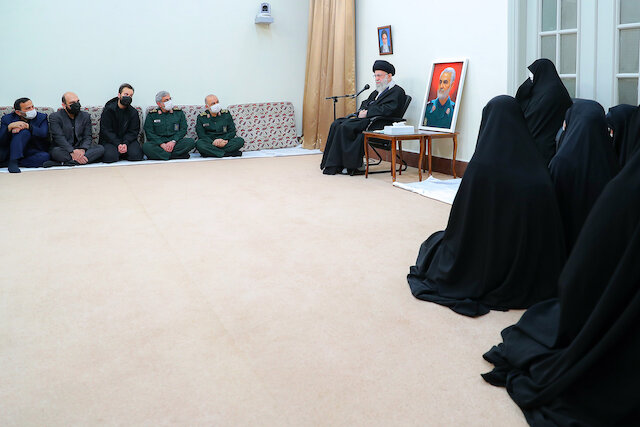Shia Islam: Imam al-Kāẓim /28
Shia Islam: Imam al-Kāẓim /28 Imam al-Kāẓim
Imam Mūsā b. Jaʿfar, the seventh Shīʿa Imam, was born in 745 AD in Medina. He died in Baghdad in 799 AD. Yazīd b. Walīd b. ʿAbd al-Malik, Ibrāhīm b. Walīd b. ʿAbd al-Malik and Marwān b. Muḥammad of the Umayyad dynasty were in power during the Imam’s childhood.
After the death of Imam al-Sādiq, Imam al-Kāẓim succeeded him. The Abbasids had taken over from Umayyads. The Abbasids Ṣaffāh, Manṣūr, his son Mahdī and his grandsons, Hādī and Hārūn al-Rashīd also ruled during his lifetime.
Imam al-Kāẓim first assessed the social conditions and the power of rulers before taking any action. Each the Imam had his own policy depending on the conditions, but the objective was to safeguard Islam.
Manṣūr, the bloodthirsty Abbasid Caliph, could not tolerate the presence of Imam al-Sādiq in Medina and had him poisoned. When he found that Imam al-Sādiq had died, he saw the conditions ripe to quash any opposition to his rule. He wrote a letter to the governor of Medina, Muḥammad b. Sulaymān, ordering him to decapitate any successor named to Imam al-Sādiq. In response, the governor noted that Imam al-Sādiq has recommended five people to succeed him:
Manṣūr
Muḥammad b. Sulaymān, governor of Medina
ʿAbd Allāh b. Jaʿfar
Mūsā b. Jaʿfar
His wife, Ḥamīda
The governor asked in the letter who he must behead! Manṣūr was infuriated and said: ‘Forget about their killing.’
By writing such a will, Imam al-Sādiq managed to prevent the death of Imam al-Kāẓim. Otherwise, he would have been murdered. Imam al-Kāẓim was 20 when he succeeded his father and Manṣūr’s letter to the governor of Medina describes how precarious the conditions were at this time. After evaluating the conditions, the Imam found that the best solution was to follow the intellectual revolution initiated by his father. To that end, he decided to train companions; the Imam had to be prudent because Manṣūr had hired many spies to find and kill anyone attaining prominence among Shīʿa. (Rijāl Kashshī)
The Imam had no option but to push ahead with his mission through spreading Islamic teachings. Those who attended his courses wrote down whatever the Imam said. ‘In 148 after Hegira, the Imam Jaʿfar Sādiq passed away in Medina, but his school never closed and it preserved its blossoming under the leadership of his son, Mūsā al-Kāẓim.’ (Mukhtaṣar Tārīkh al-ʿArab)
However, the Abbasid rulers used scholars in their employ to counter the views of Imam al-Kāẓim, whose companions did not even dare to mention the name of the Imam in public. They used to refer to him as Abū Ibrāhīm, ʿAbd Salih, al-ʿĀlim (‘The Learned One’), al-Sabir (‘The Patient One’) and al-Amīn (‘The Trusted One’).
Despite all these problems, the Imam never abandoned his struggles and took great strides in training hundreds of scholars, some of whom are as follows:
ʿAlī b. Yaqtin
Muḥammad b. Abī ʿUmayr
Hishām b. Ḥakam
Hishām b. Sālim
Yunis b. ʿAbd al-Raḥmān
Muḥammad b. Abī ʿUmayr authored 49 books based on the teachings of Imam al-Kāẓim. The ruler of the time, Hārūn al-Rashīd, was sure that the secrets political activities of Shīʿa and their connections with the seventh Shīʿa Imam were all under the control of Muḥammad b. Abī ʿUmayr. He hired spies to keep tabs on him. The spies finally reported to Hārūn that Muḥammad b. Abī ʿUmayr knew the names of all the leaders of the Iraqi Shīʿa. He was arrested and tortured to disclose the names. He refused to reveal the names. He was stripped and received 100 lashes of the whip. (Rijāl Najāshī)
By adopting the correct policies, Imam al-Kāẓim managed to survive the reigns of Manṣūr, Mahdī and Hādī. The Imam was jailed under Hārūn, who was convinced that his efforts would fail as long as the leader of the Shīʿa remained at large. After deciding to order the arrest of Imam al-Kāẓim, Hārūn went to the Prophet’s Mosque and said: ‘O prophet! I apologize for the decision I have taken. I intend to arrest and imprison Mūsā b. Jaʿfar and I fear that it may cause rift in the Muslim community and trigger bloodshed.’
The following day, Hārūn’s agents arrested the Imam while he was praying in the mosque. In order to keep the Imam’s imprisonment secret, Hārūn ordered two howdahs to travel to Kufa and Basra. In this way, people did not know which howdah was carrying the Imam to prison. The Shīʿa Imam served one year in the prison of Basra. Hārūn ordered the governor Issa b. Jaʿfar to kill the Imam. The governor refused and said he will set him free if Hārūn did not send anyone to take the Imam from there. Hārūn sent one of his agents to take the Imam from Basra to Baghdad. The Imam was jailed for four years before being poisoned in prison in Baghdad.












